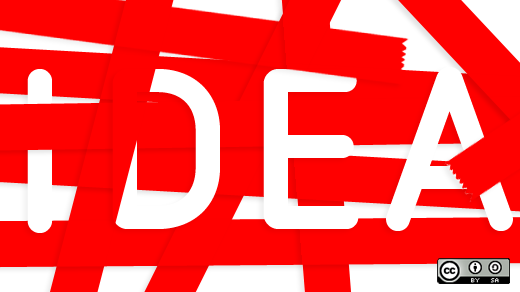Can an entrenched bureaucracy, encumbered by a rigid culture and public records compliance adapt open source ways to collaborate more effectively? Is it like pulling teeth just to get people to share ideas? Is that devil's advocate bringing your team down? If you want results, try something different. Use open communications and transparency with your team. You might be surprised how these open source pillars will create the ownership and accountability to achieve your desired results.
Imagine you came from a world were the freedom to share and collaborate were the way your organization survived. Can you apply this recipe to government?
That was the challenge Jonathan Minter, chief technology officer of information technology for the City of Raleigh, and I were faced with as we presented at the NC Digital Government Summit. Our goal was simple--spice things up. We wanted to show an audience of government employees from across the state of North Carolina new ways of collaborating.
How did we do this? We shared the story of CityCamp Raleigh. More importantly, we proved how using an open source approach led to an atmosphere of ownership and accountability.
We were in luck at the NC Digital Government Summit conference. In a keynote speech, North Carolina State CIO, Jerry Fralick, said CityCamp Raleigh was a model of citizen engagement and government efficiency. Jonathan and I had a chance to share how our open approach lead to successful collaboration and results from the planning team.
Our presentation, "Citizen-led collaboration," highlighted the decisions the planning team made and outlined the tools we used to collaborate. Our challenge was to relate to an audience that has paid staff and rigid rules of engagement how a group of volunteers succeeded through collaboration.
Creating a collaborative culture
The CityCamp Raleigh team communicated with each other, both in person and asynchronously. We met weekly every Monday night for our in-person updates. This time was used to discuss challenges, provide committee reports, and share information. It also provided the social interaction needed for a team that included some who were old friends and some new faces to gel and work well together. Over the course of the project, we used a variety of tools to communicate with each other.
Our collaborative portfolio was a mixture of Google Docs for notes, project plans, and spreadsheets, Facebook groups as a mailing list, and social media to promote the event and share updates. But it wasn't the tool set that created a culture of ownership and accountability—it was how we shared and communicated with each other that led to results.
Creating ownership, accountability, and results
The level of transparency created by the team was largely based on the notion of defaulting to open. Because each sub-committee could see what each other was working on and because there were inter-dependencies between each team, we had the natural side effect of accountability.
The accountability of our uber-level of transparency led to ownership. Our team members were committed and owned their individual tasks. When they said they were going to do something, they did it. When they got stuck, they asked for help. It was very unlikely for someone to show up at the next weekly meeting without completing their tasks.
And here's where it got interesting.
Our weekly meetings and asynchronous communications weren't just about reporting what you did. Our culture of transparency and accountability allowed people to be comfortable with sharing what they were going to work on. This key difference is what you can take back to your office.
Stop telling your boss what you did. Tell your team what you're going to do, and then deliver on it. How? The way I do it is to publish an internal blog. It lists my key responsibilities and goals. I highlight what I'm focused on and include the key metrics from the previous week as lagging indicators. It's available for anyone in the company to see, and anyone can call me out on something that may have slipped. But I deliver on my goals and this is one tactic that helps me be more transparent.
Applying transparency to government
CityCamp Raleigh was planned by volunteers with talents, passion, and commitment. The team had a shared purpose that guided us and provided our motivation. But how do you apply this to your agency or organization?
Think of it this way: you have paid volunteers with talents, passion, and commitment. Your challenge is to define a shared purpose, discover your team members’ talents, and direct their passion. Sprinkle in some of the tenets of the open source way like transparency, collaboration, and openness, and you'll start to see results.
It will take time to change entrenched cultures, but I think you'll find that open is a better way.






Comments are closed.